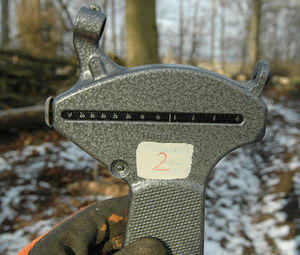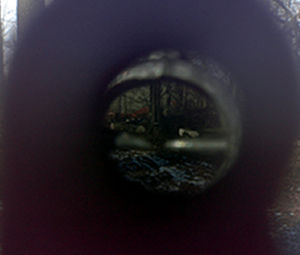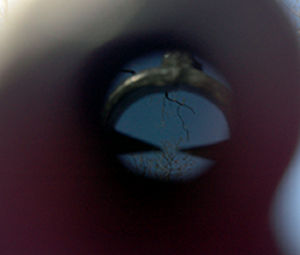Haga
From AWF-Wiki
(Difference between revisions)
(→Handling) |
|||
| Line 61: | Line 61: | ||
| − | [[Category:]] | + | [[Category:Clinometer]] |
Revision as of 10:01, 28 June 2012
| sorry: |
This section is still under construction! This article was last modified on 06/28/2012. If you have comments please use the Discussion page or contribute to the article! |
Contents |
General description
Haga is a device to measure tree heights within distances of 15, 20, 25 and 30m to the tree by the trigonometric principle and slope in percent. The suitable scale can be selected by rotating the adjustment disk at the front of the device. A reference tape can be installed at the tree to determine the distance optically.
Handling
The handling of the Haga is very similar to the Blume-Leiss instrument.
1. Distance measurement
- Place the reference tape at the tree.
- Determine an optimal distance to the tree by checking the view field to tree bottom and top within the forest stand - preferably 15, 20, 25 or 30m.
- Take place at the estimated distance to the tree
2. Height measurement
- Select the corresponding height scale by turning the adjustment disk
- Sight tree bottom, lock the pointer needle and remember the value
- Sight tree crown, lock the pointer needle and remember the value
- The difference between the measurements will be tree height: \[ {h_t} = {h_c} - {h_b} \].
Notes: When measuring with Haga, take care that the pendulum has stopped oscillating before locking the button. Be careful of taking the necessary scale.
| Advantages | Disadvantages | ||
|---|---|---|---|
| slope correction implemented | correction factors list hast to be carried in the field extra | ||
| optical distance measurement | dependance on fixed scales (could be difficult in closed forest stands) | ||
| independence of power sources (no batteries needed) | in dark forest stand optical measurement is difficult | ||
| only one needle for measurements implemented | no digital storage of measurement results available |
Applications



